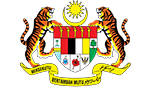الأخبار

Restoration, conservation to prevent epidemic spread
التاريخ : 13 May 2020
المحرر : syarel azill yaali
الفئة : News
غرد هذا
By Dr Mohd Ramzi Mohd Hussain - May 12, 2020

NOW that Covid-19 has spread rapidly throughout the world, it is believed that the sustainability of the environment would be an important step to be restored and conserved to avoid the spread of this epidemic to public health.
The earth's ecosystems have been altered by anthropogenic processes, including land use, harvesting populations, species introductions and climate change.
These anthropogenic processes greatly alter plant and animal communities, thereby changing transmission of the zoonotic pathogens they carry. At the same time, the United Nation Environmental Program (UNEP) have linked the epidemic to the effects of biodiversity and ecosystems on the surface.
This is then linked to biodiversity and the ecosystem of disturbed livestock in both urban and rural areas. This can be seen where there is a deliberate development or non-destruction of the natural forest which is the habitat and biodiversity of wildlife.
The effects of this environmental degradation have led to the emergence of a variety of infectious diseases, as they are today - Covid-19.
The World Health Organization (WHO) defines biodiversity as the variety of life on earth and has reference to the variety found in biota from the genetic makeup of plants and animals to cultural diversity. Biodiversity can be described in terms of species richness and species evenness.
Species richness provides representation of diversity in number of species, and species evenness represents proportional representation of each species.
With reference to disease transmission dynamics, species evenness would be an important factor as it provides total distribution of opportunities for vectors to feed from each host.
The current nature and ecosystems are in crisis, threatened by biodiversity and habitat loss, global heating and toxic pollution. Failure to act is failing humanity.
Addressing the Covid-19 pandemic and protecting ourselves against future global threats requires sound management of hazardous medical and chemical waste; strong and global stewardship of nature and biodiversity; and a clear commitment to "building back better", creating green jobs and facilitating the transition to carbon neutral economies.
Humanity depends on action now for a resilient and sustainable future. Change in the flora and fauna of a given region leads to modification of interaction among the biota which in turn lead to altered relationship between the organisms and their physical environments.
One of the direct adverse health effects due to biodiversity disturbance is evidenced through its influence on communicable disease epidemiology which is highly sensitive to ecological alteration. It must be stressed that the correlation between biodiversity and human health is not simple and linear.
Collectively, protecting existing and planting new native vegetation has great potential to curb urban biodiversity loss. Environmental health and human health are both multidimensional concepts. Identification of principles underlying win–win situations requires identification of specific, measurable components of both environmental and human health.
The species diversity as a key component of biodiversity will be a focal metric of environmental health and risk of exposure to zoonotic diseases of human health. It has been discovered that high biodiversity can protect human health by reducing the risk of certain infectious diseases.
It can buffer against disease transmission by one or more of several mechanisms, including: (i) reducing the population density of an important natural reservoir for pathogens; (ii) reducing the population density of arthropod vectors for pathogens; and (iii) reducing encounter rates between vectors and reservoirs or among reservoirs.
The article clearly shows that the correlation between restoring and conserving the environment; the epidemics; and public health. If the environment is damaged, then a virus and the disease spread quickly to humans. The environment is home to wildlife.
If these habitats and ecosystems are destroyed, they will have a devastating impact on wildlife biodiversity. Balancing biodiversity is an important factor in ensuring the sustainability and viability of this wildlife. As a result, this biodiversity is destroyed, causing the wildlife to lose their habitat.
This will directly cause every existing disease in the animal to continue and be easily transmitted to humans. Humans will receive this impression directly. To make human actions in tune with natural processes, ecological planning and design should pay particular attention to the human-environment relationships in making plans.
The writer is Associate Professor at the Department of
Landscape Architecture, Kulliyyah of Architecture and Environmental
Design (KAED), International Islamic University Malaysia (IIUM). He is
currently holding the position as a Director, OSHBE, Office of Executive
Director (Planning and Development), IIUM. He is also a Council Member
of the Institute Landscape Architects Malaysia (ILAM 2018-2020).
https://www.nst.com.my/opinion/columnists/2020/05/591723/restoration-conservation-prevent-epidemic-spread








